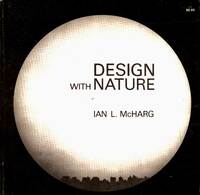- England
- Scotland
- France
- Holland
- Germany
- Italy
- Spain
- Portugal
- USA
- China
- Japan
- India
- Iran
- Advice
- Gardens
- England
- Scotland
- France
- Holland
- Germany
- Italy
- Spain
- Portugal
- USA
- China
- Japan
- India
- Iran
- Advice
- Garden Tours
Book: Landscape Planning and Environmental Impact Design: from EIA to EID
Chapter: Chapter 3 Context sensitive design theory
When development projects work against nature, it is sometimes because of ignorance, sometimes because of parsimony, and usually because it does not appear that a single project will have a significant impact on the environment. The action of one household in making 25% of their land impermeable, by building a roof and a road, has no significant affect on the water table or on flood levels. But when a town of 1 million people does the same thing, underground pipes accelerate the discharge speed, the watertable falls, trees dieback, minor streams dry up and flood peaks in larger rivers may increase tenfold. Similarly, when one householder reclaims an area of marshy land to build a house, it hardly matters. But when a whole marsh is 'reclaimed', populations of birds and fish are routinely destroyed. These are examples of designing against nature. Since modernist designers tended to ignore contexts, a counter-blast to their activities came from the conservation movement. Ian McHarg, for example, showed how natural processes should influence the design process. Although his 1969 book, Design with nature, was more concerned with planning than with design, subsequent writers, including Spirn and Hough, carried the argument further. All three writers assert that man is part of nature and that natural processes must be central to planning and design. McHarg, Spirn and Hough give examples of how to design with nature and produce environment-friendly development projects. If dwellings are built on gravel deposits instead of on marshland, much less habitat damage will be done, driveways can be porous, rainwater from roofs can be infiltrated directly into the ground. For mineral extraction, if full restoration and after-use plans are drawn up before operations commence, it is possible for the post-mining landscape to be as good, or better, than the pre-mining landscape from both the human and ecological points of view. If forests are designed on an enlightened multi-objective basis, they can be good for wildlife, good for recreation, good for sporting interests and good for timber production. If buildings are designed with vegetated roofs, rainwater is detained and evaporated, new wildlife habitats are created, internal insulation is improved and energy consumption reduced. If cycleways are made safe and convenient, they will prevent damage to the ozone layer, make cities quieter, reduce the incidence of asthma, decrease the amount of land which needs to be allocated to roads. These are examples of design with nature and the case for this type of contextual design is overwhelming. The Australian's proposal for a Eucalyptus forest would receive short shrift from design with nature theorists. They would point out that Eucalypts are not indigenous to Europe , that they are not entirely frost-hardy and that they do not have any associated fauna or flora. The stainless steel church might receive more favourable consideration, because of its durability.
